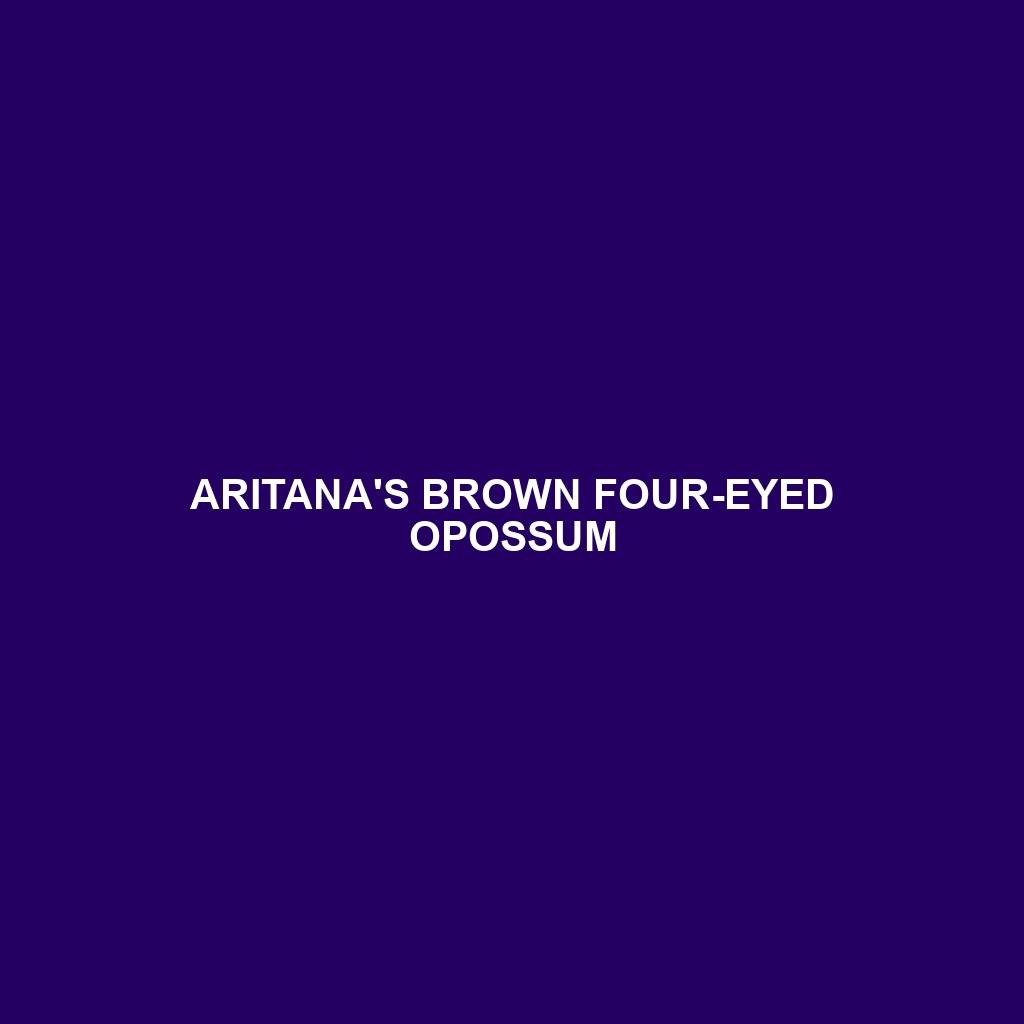Aritana’s Brown Four-eyed Opossum: An In-Depth Profile
:
Aritana’s Brown Four-eyed Opossum (Metachirus nudicaudatus aritanae) is a fascinating small mammal native to the tropical forests of South America. This opossum is distinguished by the unique white spots above its eyes, which give the illusion of having “four eyes.” Known for their nocturnal habits and solitary nature, these opossums play a vital role in their ecosystems as seed dispersers and insect controllers.
Physical Characteristics:
Size: Aritana’s Brown Four-eyed Opossum typically measures between 25 to 35 centimeters in body length, with an additional 30 to 40 centimeters for their prehensile tail.
Coloration: The fur of this opossum is predominantly brown, with a lighter underbelly. The distinctive white spots above each eye are a key identification feature.
Special Features: One of the most remarkable features of this species is its prehensile tail, which aids in climbing and grasping objects. Their large, sensitive whiskers and sharp claws are also crucial adaptations for nocturnal foraging.
Behaviors:
Social Interactions: Aritana’s Brown Four-eyed Opossum is generally solitary, coming together primarily during the breeding season. They communicate through a variety of vocalizations, scents, and body language.
Feeding Habits: These opossums are omnivorous, with a diet comprising fruits, insects, small vertebrates, and occasionally carrion. Their role as seed dispersers is particularly significant in maintaining forest biodiversity.
Ecological Roles: As both predators and prey, they help control insect populations and serve as food for larger predators. Their seed-dispersal activities contribute to the regeneration of tropical forests.
Habitats:
Natural Habitat: This species thrives in tropical rainforests, often found in dense undergrowth and near water sources. They are adept climbers and may also be found in secondary forests and plantations.
Range: Aritana’s Brown Four-eyed Opossum is mainly distributed across the Amazon Basin, covering countries such as Brazil, Peru, Colombia, and Venezuela.
Adaptations:
Nocturnal Lifestyle: Their large, reflective eyes and keen sense of smell and hearing are perfect adaptations for a life active during the night.
Prehensile Tail: This feature allows them to navigate the complex three-dimensional environment of the forest canopy efficiently.
Camouflage: Their brown fur provides excellent camouflage against the forest floor and trees, helping them avoid predators.
Conservation Status:
Current Status: While specific population numbers are not well-documented, Aritana’s Brown Four-eyed Opossum is not currently listed as endangered. However, habitat destruction due to deforestation poses a significant threat.
Conservation Efforts: Protecting large areas of tropical rainforest and promoting sustainable land-use practices are crucial for the conservation of this species.
Fun Facts:
Unique Name: The name “four-eyed” refers to the white spots above their eyes, a unique feature among opossums.
Adaptability: Aritana’s Brown Four-eyed Opossum can adapt to various environments within its range, showcasing remarkable resilience.
Nocturnal Navigation: Their whiskers are so sensitive that they can navigate through dense underbrush in complete darkness.
By preserving their natural habitats and understanding their ecological importance, we can ensure that Aritana’s Brown Four-eyed Opossum continues to thrive in the rich biodiversity of the South American tropical forests.
